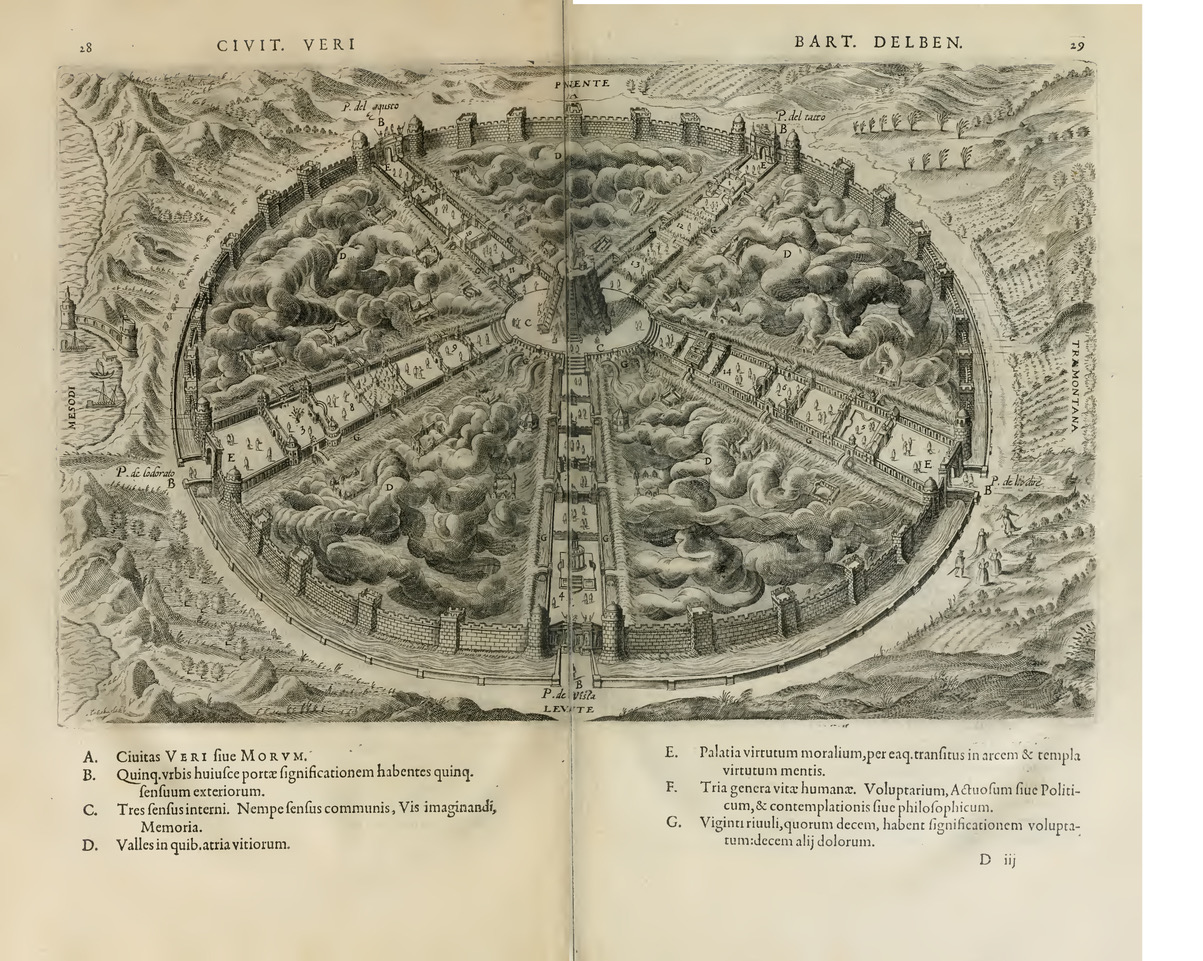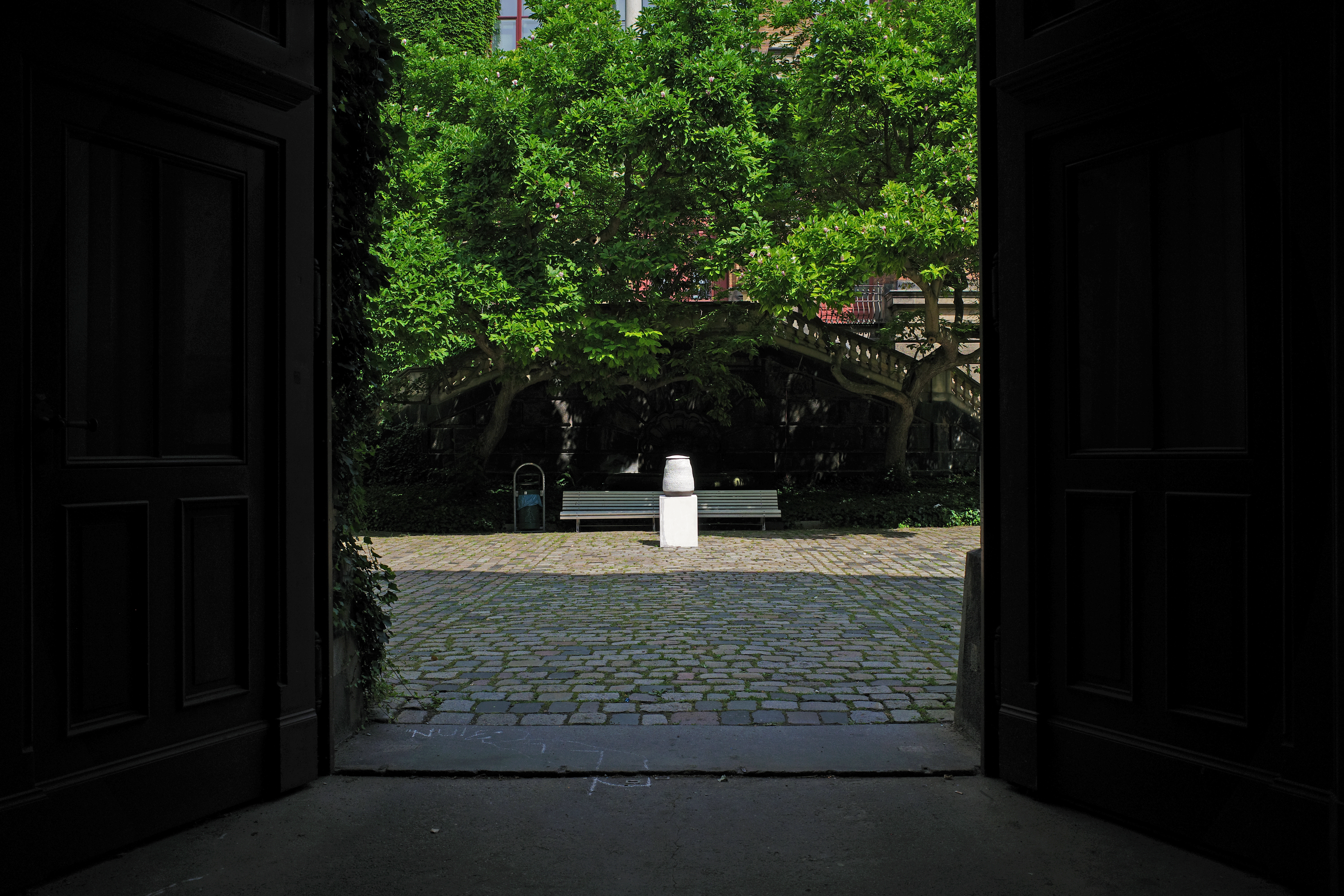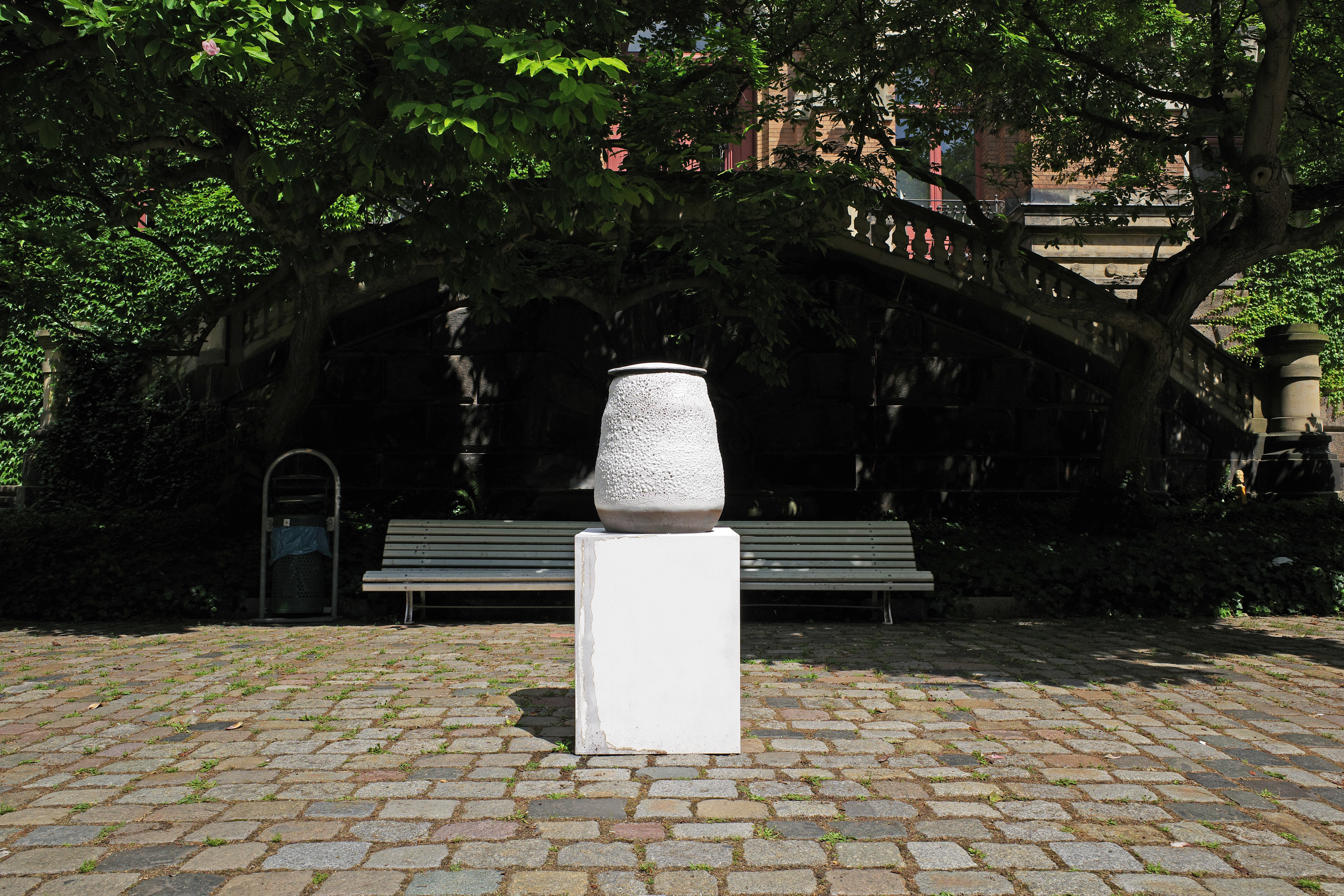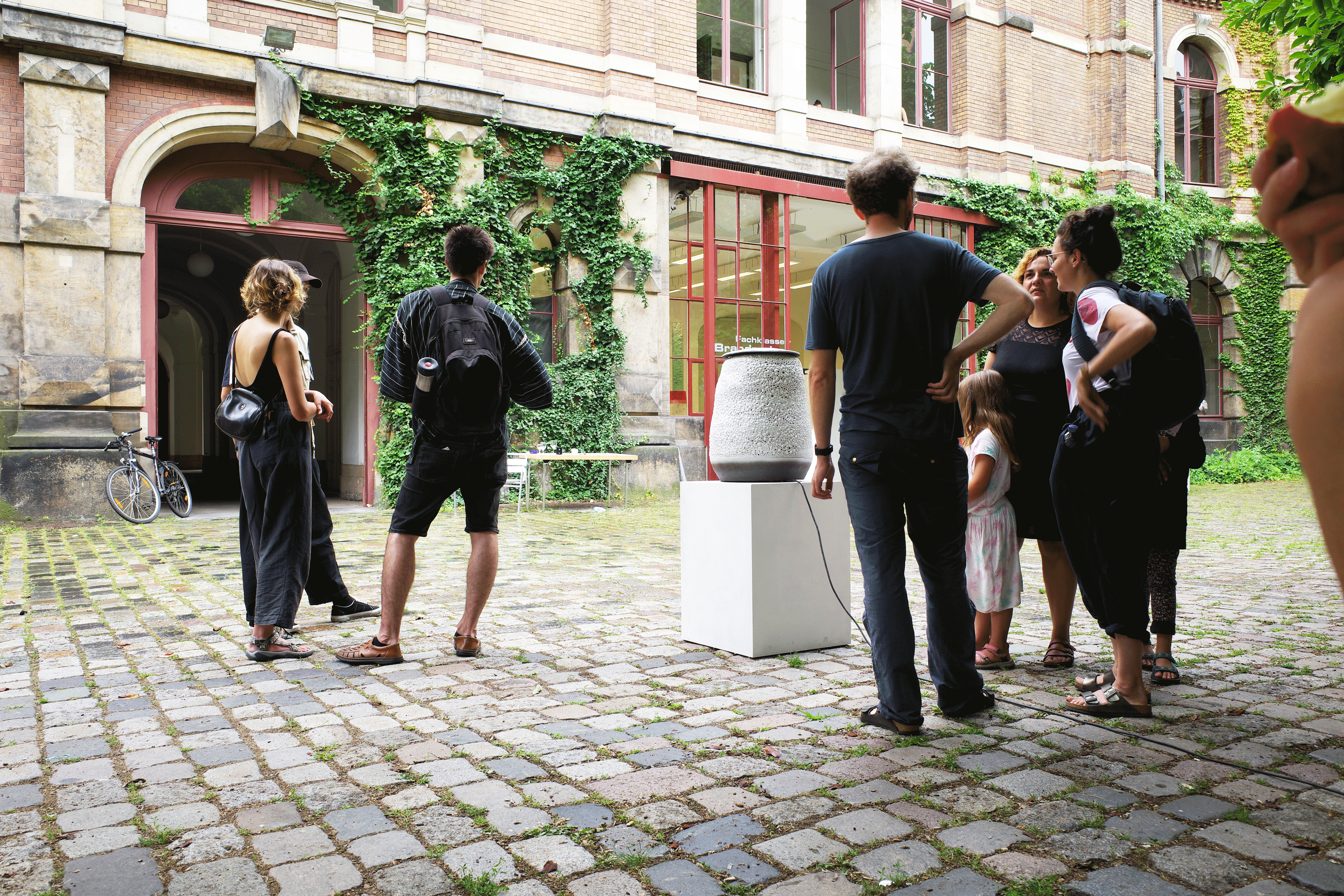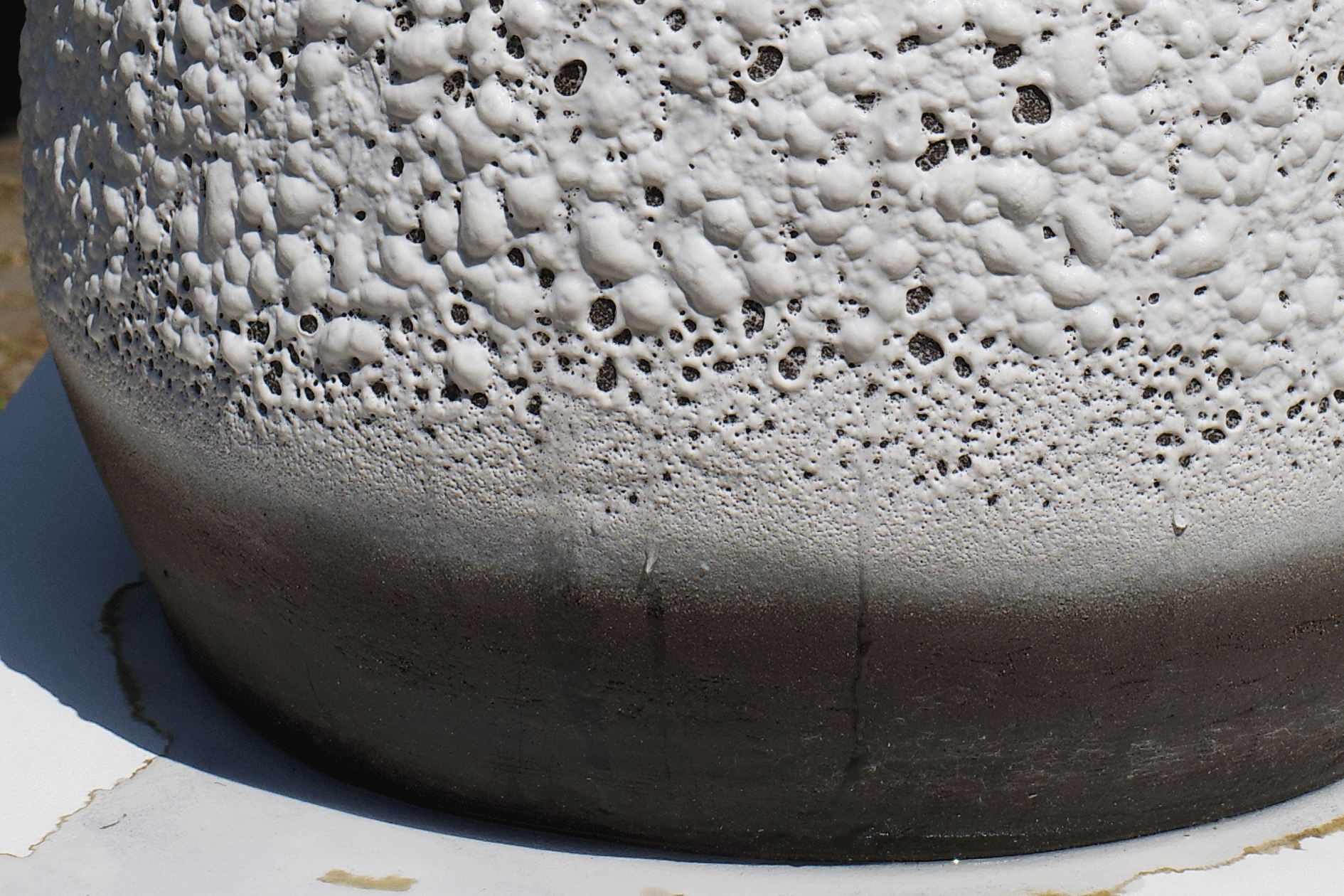Temple of Void
2021
fountain; site-specific installation stoneware ceramic, porcelain 45*45*55(cm)
As a precursor to “The City of Truth" Symposium, Class Philipsz will develop a series of interventions, collaborative or individual, throughout the transitory spaces of The Academy of Fine Art, Dresden.
The motif of the symposium “The City of Truth” is an image of the mind as a walled city with five gates corresponding to the five senses. The main protagonists enter the city through the Gate of Hearing. As the venue for the symposium, the Hochschule für Bildende Künste at the Bruhlische Terrace, is situated directly on Dresden's former city walls, I would like us to explore the connections between this utopian walled city and the contemporary walled city. I would like us to develop a series of interventions, collaborative or individual, throughout the HfBK building, the HfBK courtyard, leading out on to the Bruhlische Terrace with its majestic views over the river. The title "The Sixth Sense" refers to those experiences that cannot be attributed to any of the five senses. "The Sixth Sense" will comprise interventions that explore the extra sensory power of contemporary art. The walled city of Dresden will be activated during the symposium to bring the past into the present and to connect the ideas articulated throughout the symposium with the public space of the contemporary city.*
*description text from the exhibition
The motif of the symposium “The City of Truth” is an image of the mind as a walled city with five gates corresponding to the five senses. The main protagonists enter the city through the Gate of Hearing. As the venue for the symposium, the Hochschule für Bildende Künste at the Bruhlische Terrace, is situated directly on Dresden's former city walls, I would like us to explore the connections between this utopian walled city and the contemporary walled city. I would like us to develop a series of interventions, collaborative or individual, throughout the HfBK building, the HfBK courtyard, leading out on to the Bruhlische Terrace with its majestic views over the river. The title "The Sixth Sense" refers to those experiences that cannot be attributed to any of the five senses. "The Sixth Sense" will comprise interventions that explore the extra sensory power of contemporary art. The walled city of Dresden will be activated during the symposium to bring the past into the present and to connect the ideas articulated throughout the symposium with the public space of the contemporary city.*
*description text from the exhibition
"The spirit walks in the middle and man walks in the side."
In Korean culture, the central path was believed to be for the spirits. In the center of the courtyard of the historical Art Academy building in Dresden is a white ceramic body installed for the exhibition The Sixth Sense.
Ceramic is one of the oldest materials that has accompanied human history. It is nowadays mostly burned above 1,000 degrees, similar to the cremation. Inspired by this similarity, the artist considers the process of ceramic making a ritual.
In this particular workpiece, the dark, ash-colored stoneware ceramic under the matt white glaze, which the glaze named after the Jewish-Austrian-British potter Lucie Rie, cause a strong visual controversy. Inside the ceramic body is half-filled with water and a water pump is installed. The pump circulates the water and makes an active movement, which causes to plays the numerous porcelain bells hanging under the lid. These bells are formed from a small porcelain teacup that was used for the daily tea ceremony. The sound of the circulating water and the ringing of the bell remains in the dark, underneath the lid and hidden from view, arousing the curiosity.
Porcelain bells play their role as a medium to awaken the sixth sense. Bells have been used as a spiritual-religious medium in culture. And the porcelain bell was considered an important object to control the technological progress of the porcelain industry.
Saxony, famed for its glorious cultural history, is also known for its first western porcelain invention. And the city has celebrated its success ever since with its porcelain manufacture in Meißen.
On the other hand, the Academy building and its surrounding site are full of scars from the Second War. Built around the 18th century, the building survived the massive bombing raids of the 20th century and witnessed the mad history of its own city. In addition to this, Saxony's political position of the recent cast a shadow on this spot and trigger distorted history and forgotten deaths.
In Korean culture, the central path was believed to be for the spirits. In the center of the courtyard of the historical Art Academy building in Dresden is a white ceramic body installed for the exhibition The Sixth Sense.
Ceramic is one of the oldest materials that has accompanied human history. It is nowadays mostly burned above 1,000 degrees, similar to the cremation. Inspired by this similarity, the artist considers the process of ceramic making a ritual.
In this particular workpiece, the dark, ash-colored stoneware ceramic under the matt white glaze, which the glaze named after the Jewish-Austrian-British potter Lucie Rie, cause a strong visual controversy. Inside the ceramic body is half-filled with water and a water pump is installed. The pump circulates the water and makes an active movement, which causes to plays the numerous porcelain bells hanging under the lid. These bells are formed from a small porcelain teacup that was used for the daily tea ceremony. The sound of the circulating water and the ringing of the bell remains in the dark, underneath the lid and hidden from view, arousing the curiosity.
Porcelain bells play their role as a medium to awaken the sixth sense. Bells have been used as a spiritual-religious medium in culture. And the porcelain bell was considered an important object to control the technological progress of the porcelain industry.
Saxony, famed for its glorious cultural history, is also known for its first western porcelain invention. And the city has celebrated its success ever since with its porcelain manufacture in Meißen.
On the other hand, the Academy building and its surrounding site are full of scars from the Second War. Built around the 18th century, the building survived the massive bombing raids of the 20th century and witnessed the mad history of its own city. In addition to this, Saxony's political position of the recent cast a shadow on this spot and trigger distorted history and forgotten deaths.
